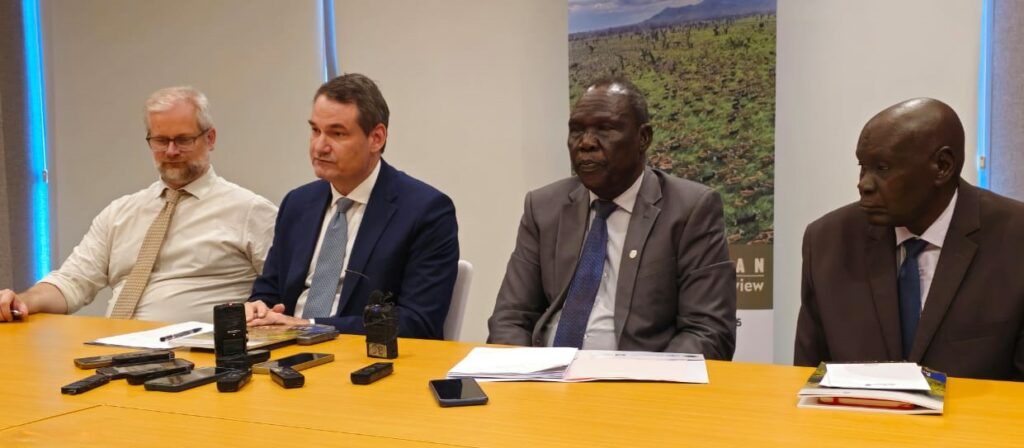The World Bank Group on Monday called on South Sudan to diversify its economy to promote inclusive development.
The World Bank said in a report on the South Sudan Natural Resource Review (NRR) that the country’s habitats were vast, offering its sparse population a wealth in fisheries, forestry and wildlife.
It said 75 percent of South Sudanese already rely directly on local ecosystems for food, clean water, and energy that have a far greater potential to contribute to national development.
The World Bank said fishing is key to the livelihoods of many South Sudanese and generates significant local government income.
It noted that roughly 2.1 million people were members of households where at least one person was fishing, with around 250,000 active full-time fishers in the most productive areas in Upper Nile, Jonglei and Unity State.
The Lead Environment Specialist at the World Bank South Sudan, Stephen Ling, said the current fish catch was estimated at 300,000 tons per year and was likely significantly lower than the average sustainable production, much of its potential value of around US$300 million at the local market prices.
He said 70 percent of the fish caught in South Sudan was lost due to poor handling, post-harvest physical and quality loss and the inability to transport to a regional market dominated by foreign exporters, particularly to the Democratic Republic of Congo where prices roughly double those in South Sudan.
“South Sudan has one of the most productive freshwater fisheries in the world, driven by the highly variable annual flood dynamics of the vast Sudd and surrounding White Nile floodplain. To the southeast of the Sudd, those floodplains support the world’s largest wildlife migration, estimated at over 5 million antelopes. But alongside abundance, there have also been rapid declines. Large wildlife has declined around 90 percent across the country, following the proliferation of automatic weapons since the 1980s and high prices of ivory and rhino horn, and the largest teak plantations in Africa have almost vanished,” he said
The World Bank said the forestry sector in South Sudan covers around 30 percent of the national land area, and they have exceptionally high ecosystem integrity and may still contain commercially valuable native species, which neighboring countries have largely lost.
It stressed that the wildlife retains vast and varied natural habitats with the potential to support world-class, nature-based tourism attractions but the two most globally important wildlife landscapes – the vast Sudd wetland and the world’s largest wildlife migration in the Boma-Bandingilo-Jonglei landscape are only partly protected, and wildlife management is very limited throughout the country.
“South Sudan’s remarkable natural assets have the potential to deliver major benefits for its people. Managing these resources must be done wisely to maximize the benefits and ensure sustainability. Community-based natural resources management and development of sustainable value chains offer important pathways to dependence on oil while directly benefiting rural communities and supporting inclusive development in South Sudan,” said Charles Undeland, the World Bank Group Country Manager for South Sudan.
According to the report, the restoration of the teak plantation industry could generate close to US$1 million per year and 150 jobs per 1,000 hectares, and close to a third of South Sudan has the potential for community forest management, which could potentially generate over US$1 billion per year in sustainable revenue from non-timber forest products.




